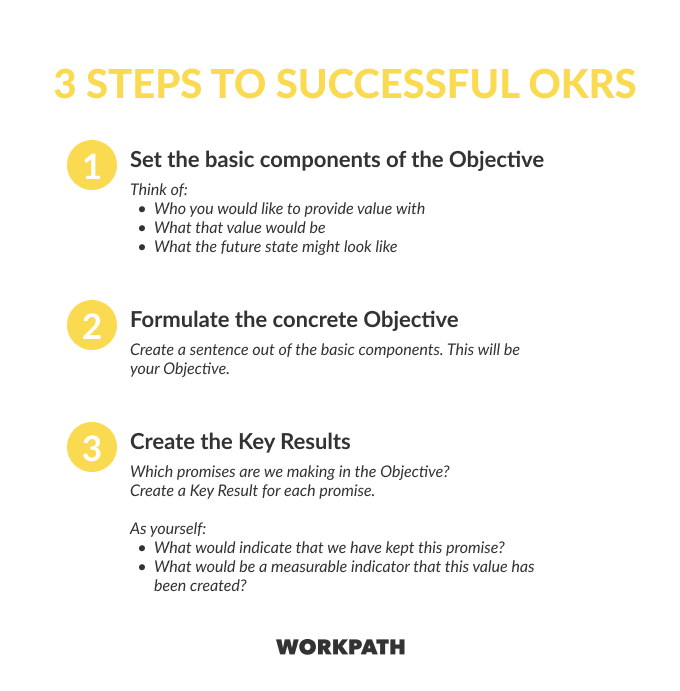Case Study #10 : Chip Wars that led to the birth of OKRs
To learn how to effectively implement Objectives and Key Results across the organisation, we are going back to 1980s when Intel decided to crush Motorola and then look at modern day examples. The story is interesting. Before we deep-dive into Productify’s 10th case study, do not forget to subscribe to get high quality product case studies right in your Inbox:
➡️ Before OKRs came into being
When it comes to “Measuring and Improving” , the history can be traced to three legends: Henry Ford, Peter Drucker and Andy Grove. A lot of ‘Management by Objectives (MBO)’ is attributed to Henry Ford but it was mostly top-down, set for long-term, linked to compensation and risk-averse.
Peter Drucker was quick to bullshit the Ford way of setting MBOs and was quoted saying that they were “just another tool” and “not a great cure for management inefficiency”. Peter Drucker then modified these MBOs and included a more human side to it, such that MBOs not only are “prescriptions for profit” but are also inclusive:
”A process where the superior and the subordinate jointly identify common goals, define each individual’s major areas of responsibility in terms of the results expected from him or her, and use these measures as guides for operating the unit and assessing the contribution of each of its members”
Wikipedia — Management by objectives
But it was Andy Grove who culminated a lot of good schools of thought (including Drucker’s) on Management by Objectives and utilised the practice of setting OKRs (Objectives and Key Results) to convert Intel into the world’s largest manufacturer of semiconductors.
🏆 Intel’s Operation Crush
Sounds aggressive, right?
In early 1980s, Intels’ 8086 chip saw strong competition from Motorola’s 68000 and Zilog’s Z8000. Intel cooked up a task force and launched one of the most legendary campaigns ‘Operation Crush’ to once and for all defeat Motorola. It was going to be touch.
Here is the extract from the letter Andy Grove wrote to all Field Sales Engineers launching Operation Crush:
📈 OKRs : Path to Win
Intel setup OKRs throughout the organisation and ensured that everyone was aligned on what each team had to do make the campaign successful. But, the most interesting thing about those OKRs was how daring they were. Take for example, one of the Objectives was “2000 Design Wins” → which meant that 2000 agreements were to be signed with clients to put the 8086 chips into their appliances. (One year later, the team beat the 2000 design win target and exceeded it by 25%).
Here is a screenshot of Intel’s objective at company level for Operation Crush:
If you look at OKR setting for the Operation Crush Campaign, few things are worth noticing and can become basis of OKR setting in any organisation (we will soon see some examples from current times):
1. OKR setting process was directed from management BUT had inputs from entire organisation making them democratic
2. High Tracking: With clear and known OKRs, each team/person was accountable for what they had to achieve
3. Measurable: Every step of the way Intel know how far ahead or behind they were on their way to achieve the KRs
4. The goals were ambitious yet achievable. And they were not tied to salary or compensation.
⚡️⚡️Characteristics of Objectives and KRs
When setting OKRs, there are some traits to be kept in mind:
1. Objectives should be Significant, Inspiring, Concrete and Actionable
2. KRs should be Measurable, Challenging Yet Achievable and Time-bound
OKRs can first be set at organisation level and then trickled down to teams and functions. Example an organisation can publish their main OKRs and then respective team can refer to those OKRs to come up with their own. The team’s OKRs should be set in a way that they help achieve organisation’s too.
Once OKRs have been set, ensure of the below dynamics for their effective implementation:
1. Ensure that all teams are aligned on What and Why of organisational OKRs and their own OKRs contribute to organisations. Ideally, everyone in company should setup and know their own OKRs and also how it links to organisation’s.
2. Ensure that OKRs are motivating and inspiring but challenging at the same time.
3. Ensure that OKRs are reached at democratically, through debates (participation is key - should not be top down) until it satisfies the question: Will the OKRs help us achieve our company vision?
4. Ensure you have clear accountable people for each of the KR so that you can track how we are doing on them and who’s responsible.
5. Do not link OKR performance with salary or bonus. Put the organisation above personal goals for the employees.
🚀How to make your OKRs standout?
1. Make your OKRs outcome driven rather than output drive
2. KRs can be both input or output focused (output being used here to refer to outcomes for a second). Input KRs are the specific task and activities that need to be done to reach your objective. Again, if your objective is to become the world’s top shoe brand, an input KR could be to open 50 new stores by the end of the year, introduce 10 new shoe styles, or redesign the company’s website. ( Source: Input vs Output KRs)
➡️ OKR example from Google Chrome
Objective: Develop the next-generation client platform for web applications
Key Result: 20 million seven-day active users
If you look at the Objective it ticks all boxes of being significant, inspirational and concrete while the key result is measurable, challenging and time bound.
Eventually with this single focus, Chrome ended up with nearly 70% of browser market share.
➡️ OKR Example of how a Product Designer would setup OKRs on usability of product:
Objective: Make usability of the sign-up functionality smoother (1) and faster (2), so that more people sign up (3).
Key Results:
90% of participants in user testing perceive it as smoother than before
Decrease new user sign-up time to 2 min
Decrease bounce rate from sign-up from to 20%
Increase first-try sign-ups to 60%
🔥🔥Free Template
CHECKOUT → Template for setting up your own OKRs
Follow Productify on Twitter for daily product tips









